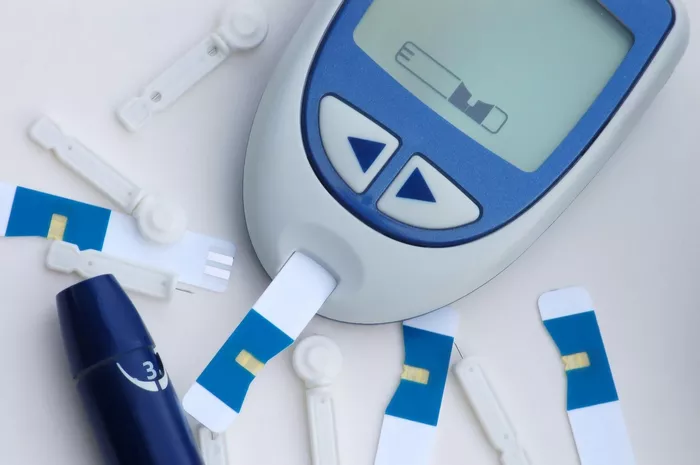Type 1 diabetes (T1D) is a chronic autoimmune condition characterized by the destruction of insulin-producing beta cells in the pancreas, leading to insulin deficiency and dysregulation of blood glucose levels. While the exact cause of T1D remains elusive, extensive research has shed light on the complex interplay of genetic, environmental, and immunological factors underlying its development. In this comprehensive article, we delve into the multifaceted etiology of T1D, explore current theories and hypotheses, and discuss the implications for prevention, treatment, and future research directions.
1. Genetic Factors:
Genetic predisposition plays a significant role in the development of type 1 diabetes, with certain genetic variants increasing susceptibility to the condition. The strongest genetic risk factor for T1D is the human leukocyte antigen (HLA) complex, a region on chromosome 6 that encodes proteins involved in the immune system’s recognition of foreign antigens. Specific HLA genotypes, particularly those within the HLA class II region (e.g., HLA-DR, HLA-DQ), are strongly associated with an increased risk of T1D.
In addition to HLA genes, numerous other genetic loci have been implicated in T1D susceptibility, including genes involved in immune regulation, beta cell function, and cytokine signaling pathways. Genome-wide association studies (GWAS) have identified over 60 genetic regions associated with T1D risk, providing insights into the molecular mechanisms underlying the disease.
However, while genetic predisposition is necessary for the development of T1D, it is not sufficient on its own, suggesting that environmental factors play a crucial role in triggering the autoimmune response against pancreatic beta cells.
2. Environmental Triggers:
Environmental factors are believed to play a significant role in initiating and triggering the autoimmune destruction of pancreatic beta cells in individuals genetically predisposed to T1D. Several environmental triggers have been implicated in T1D development, including viral infections, dietary factors, gut microbiota, and exposure to environmental toxins.
- Viral Infections: Viral infections, particularly enteroviruses such as coxsackievirus and rotavirus, have been implicated as potential triggers of T1D. These viruses may induce pancreatic inflammation, trigger autoimmunity, and disrupt beta cell function, leading to the destruction of insulin-producing cells. Epidemiological studies have shown an association between viral infections and the onset of T1D, although the exact mechanisms remain unclear.
- Dietary Factors: Dietary factors, including early exposure to cow’s milk, gluten, and certain dietary antigens, have been hypothesized to contribute to T1D development by stimulating the immune system and promoting autoimmunity. Additionally, vitamin D deficiency, omega-3 fatty acid imbalances, and altered gut microbiota composition have been implicated in T1D pathogenesis, highlighting the potential role of diet and nutrition in modulating immune function and diabetes risk.
- Gut Microbiota: The gut microbiota, composed of trillions of bacteria residing in the gastrointestinal tract, play a critical role in immune regulation and host-microbe interactions. Alterations in gut microbiota composition, known as dysbiosis, have been associated with autoimmune diseases, including T1D. Disruption of the gut barrier, increased intestinal permeability, and microbial dysbiosis may promote the translocation of bacterial antigens into systemic circulation, triggering immune responses and contributing to T1D pathogenesis.
- Environmental Toxins: Exposure to environmental toxins, such as heavy metals, pesticides, and air pollutants, has been suggested as potential risk factors for T1D. These toxins may induce oxidative stress, inflammation, and immune dysregulation, leading to beta cell damage and autoimmunity. Epidemiological studies have shown associations between environmental exposures and T1D incidence, although further research is needed to elucidate the underlying mechanisms.
3. Immunological Mechanisms:
The hallmark feature of type 1 diabetes is the autoimmune destruction of insulin-producing beta cells in the pancreatic islets of Langerhans. The immune-mediated destruction of beta cells is initiated by the activation of autoreactive T cells, which recognize pancreatic antigens (such as insulin, glutamic acid decarboxylase, and islet antigen-2) as foreign and mount an immune response against them.
Several immunological mechanisms contribute to the pathogenesis of T1D, including:
- T Cell-Mediated Autoimmunity: Autoreactive T cells, particularly CD4+ and CD8+ T cells, infiltrate the pancreatic islets and target beta cells for destruction. CD4+ T cells release pro-inflammatory cytokines (such as interleukin-1β, interleukin-6, and tumor necrosis factor-α), which promote inflammation and recruit other immune cells to the site of injury. CD8+ T cells induce beta cell apoptosis through cytotoxic mechanisms, leading to beta cell death and insulin deficiency.
- B Cell-Mediated Autoimmunity: Autoreactive B cells produce autoantibodies targeting pancreatic antigens, such as insulin and glutamic acid decarboxylase, leading to the formation of immune complexes and complement activation. Autoantibodies against beta cell antigens serve as biomarkers of T1D risk and are detected in individuals years before clinical onset.
- Dysregulated Immune Responses: Dysregulation of immune checkpoints, regulatory T cell dysfunction, and impaired peripheral tolerance mechanisms contribute to the breakdown of immune tolerance and the development of autoimmunity in T1D. Imbalance between pro-inflammatory and anti-inflammatory cytokines, aberrant activation of dendritic cells, and defects in immune surveillance mechanisms further perpetuate the autoimmune response and beta cell destruction.
4. Implications for Prevention and Treatment:
Understanding the complex interplay of genetic, environmental, and immunological factors underlying T1D pathogenesis is crucial for developing strategies for prevention and treatment. While T1D cannot be prevented or cured, efforts to delay disease onset, preserve beta cell function, and modulate immune responses hold promise for improving outcomes and quality of life for individuals with T1D.
- Primary Prevention: Strategies for primary prevention of T1D aim to identify individuals at high risk for developing the disease and intervene before clinical onset. Screening for genetic risk factors, autoantibodies, and environmental triggers can help identify at-risk individuals and implement targeted interventions, such as immunomodulatory therapies, dietary modifications, and vaccination strategies.
- Immunomodulatory Therapies: Immunomodulatory therapies, such as immune checkpoint inhibitors, cytokine modulators, and antigen-specific immunotherapy, aim to restore immune tolerance, inhibit autoimmunity, and preserve beta cell function in individuals with T1D. Clinical trials investigating the efficacy and safety of these therapies are underway, with promising results reported in preclinical and early-phase studies.
- Beta Cell Replacement Therapies: Beta cell replacement therapies, including pancreatic islet transplantation and stem cell-based therapies, offer potential solutions for restoring insulin production and reversing diabetes in individuals with T1D. Islet transplantation involves the infusion of donor islets into the liver, where they engraft and produce insulin, while stem cell-based therapies aim to regenerate beta cells from endogenous or exogenous stem cell sources.
- Personalized Medicine: Advances in precision medicine and genomic technologies enable personalized approaches to T1D management, tailored to individual genetic, environmental, and immunological profiles. Integration of multiomic data (genomic, transcriptomic, proteomic, metabolomic) with clinical phenotypes holds promise for identifying biomarkers, predicting disease progression, and guiding personalized treatment strategies for T1D.
5. Conclusion:
In conclusion, type 1 diabetes is a complex autoimmune disease characterized by the destruction of insulin-producing beta cells in the pancreas. While the exact cause of T1D remains elusive, genetic predisposition, environmental triggers, and immunological mechanisms contribute to its development and progression. Understanding the interplay of these factors is crucial for developing strategies for prevention, early intervention, and personalized treatment approaches for individuals with T1D.
By advancing our knowledge of T1D etiology, leveraging emerging technologies, and collaborating across disciplines, we can unlock new insights into disease pathogenesis, identify novel therapeutic targets, and ultimately improve outcomes for individuals living with T1D. Continued research efforts, public health initiatives, and advocacy for T1D awareness and support are essential for advancing the field and ultimately finding a cure for this chronic condition.

























